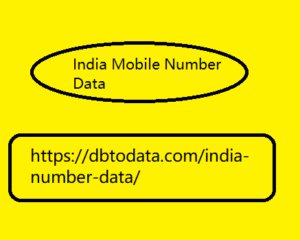Post by account_disabled on Mar 10, 2024 9:42:15 GMT
In an ideal continuum of reality that starts from that made of atoms and reaches the completely synthetic one, various technologies and experiences called Extended Reality (XR) are positioned. The Augmented reality Augmented reality is reality enriched by elements generated by software. Experiments began in the 1950s in military laboratories which developed the first "head-up displays" (HUD), screens capable of projecting additional data into the field of vision of aircraft pilots, in order to avoid distractions. Since 2016, after the success of the Pokémon Go app, it has become a term in common use. The company that created that game, Niantic , is still at the forefront of developing a metaverse understood as an augmented universe, which does not make us lose contact with what surrounds us.
To do this it is necessary to be able to map physical reality and build India Mobile Number Data a synthetic replica of it ( digital twin ) on which it is possible to superimpose digital elements, with which to interact. Right now all the big tech companies are exploring this possibility. Google and Apple, being able to control the access device and the enabling software, have already given their operating systems the power to enable augmented reality experiences (and third-party developers to create them through special development kits), but they are also working on hardware special for consumers. Google had already created " Google Glass ", anticipating its entry into the consumer market too much and then managing to reposition them as a work tool. Apple is working on its glasses which should see the light of day next year. Social media also plays a role in the popularization of augmented reality.

Snapchat was the first app to offer augmented reality effects to apply to the face in 2015. A year later Facebook also started doing so and then extended this possibility to Instagram too. Both platforms provide development environments, Spark AR Studio and Lens Studio, to create virtual elements for use in their respective apps. And both are working on glasses to make use more convenient. In addition to playful applications, augmented reality is being experimented with to try products before purchasing (see the Snap lens from Farfetch's virtual try-on or the experiments of L'Oreal which acquired a company specializing in AR ). Virtual reality We talk about virtual reality to describe a digital simulation of an environment, real or imaginary, that the user can inhabit, interacting with it, through specific hardware peripherals (viewer, earphones, gloves or joystick and in some cases a suit).
To do this it is necessary to be able to map physical reality and build India Mobile Number Data a synthetic replica of it ( digital twin ) on which it is possible to superimpose digital elements, with which to interact. Right now all the big tech companies are exploring this possibility. Google and Apple, being able to control the access device and the enabling software, have already given their operating systems the power to enable augmented reality experiences (and third-party developers to create them through special development kits), but they are also working on hardware special for consumers. Google had already created " Google Glass ", anticipating its entry into the consumer market too much and then managing to reposition them as a work tool. Apple is working on its glasses which should see the light of day next year. Social media also plays a role in the popularization of augmented reality.

Snapchat was the first app to offer augmented reality effects to apply to the face in 2015. A year later Facebook also started doing so and then extended this possibility to Instagram too. Both platforms provide development environments, Spark AR Studio and Lens Studio, to create virtual elements for use in their respective apps. And both are working on glasses to make use more convenient. In addition to playful applications, augmented reality is being experimented with to try products before purchasing (see the Snap lens from Farfetch's virtual try-on or the experiments of L'Oreal which acquired a company specializing in AR ). Virtual reality We talk about virtual reality to describe a digital simulation of an environment, real or imaginary, that the user can inhabit, interacting with it, through specific hardware peripherals (viewer, earphones, gloves or joystick and in some cases a suit).
